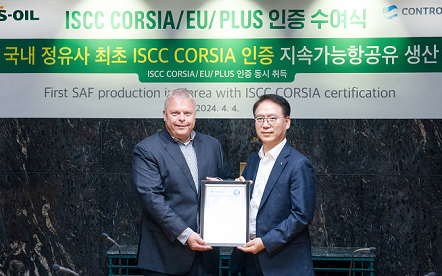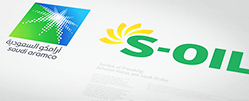● S-OIL declares “new age of petrochemicals” at New Complex Inauguration Ceremony attended by President Moon and His Royal Highness Prince Mohammed bin Salman Al-Saud, Crown Prince, Deputy Prime Minister, Minister of Defense of Saudi Arabia
- USD 4.2 billion RUC/ODC transforms S-OIL from a refiner to an integrated energy and chemical company
- ‘Model investor’ S-OIL eyes another USD 6 billion investment to drive ‘innovative growth’ from ‘oil to chemical’
● Majority shareholder Saudi Aramco to give full support to S-OIL’s “future growth through investment”
- Ever since Saudi Aramco joined as the majority shareholder, S-OIL’s refining capacity grew seven times and rose into petrochemical stronghold
On Jun. 26th, S-OIL, represented by Director Hussain Al-Qahtani, held S-OIL’s New Complex Inauguration Ceremony at Dynasty Hall, Hotel Shilla in the presence of President Moon Jaein and His Royal Highness Prince Mohammed bin Salman Al-Saud, Crown Prince, Deputy Prime Minister, Minister of Defense of Saudi Arabia. The Ceremony was also joined by Sung Yoonmo, Minister of Trade, Industry, and Energy of the Republic of Korea; His Excellency Khalid Abdulaziz Al Falih, Minister of Energy, Industry, and Mineral Resources of the Kingdom of Saudi Arabia; Amin H. Nasser, President and Chief Executive Officer, Saudi Aramco, which is the majority shareholder of S-OIL; and more than 500 business partners, customers and the refining industry from home and abroad to congratulate the successful operation of new facilities.
Operation of the new petrochemical complex, which converts low value residue oil to gasoline and propylene. The latter is processed again to produce high-value petrochemical products such as polypropylene (405,000 ton/year) and propylene oxide (300,000 ton/year) capitalizing on a technology developed by Saudi Aramco. This marks an innovative transformation for S-OIL from ‘oil to chemical’. The project of USD 4.2 billion, which drew attention as the largest-ever project in Korea’s refining and petrochemical industry, was the first mega-scale investment since Saudi Aramco became the sole majority shareholder of S-OIL. The project also furthered economic cooperation between Korea and Saudi Arabia.
Chulsu Kim, Chairman of the Board of Directors of S-OIL Corporation said “the successful completion of the largest-ever project in the history of Korea’s refining and petrochemical industry marks an innovative transformation for S-OIL that started off as a small refinery 43 years ago. It ushers the company into petrochemical downstream aimed at driving integration with petrochemical and securing future growth engine.” In his welcome remarks at the ceremony, he expressed gratitude to the Korean government, city of Ulsan and the majority shareholder, Saudi Aramco, for offering their full support to the project as well as to all S-OIL employees and contractors for their passion and dedication.
■ Saudi Aramco pledges full support to S-OIL based on “investment for future growth and success DNA”
By securing the future growth engine and establishing a more balanced business portfolio across fuel, lube and petrochemical businesses through the successful completion and operation of the project, S-OIL now steps closer to the vision of becoming the most competitive and admired energy and chemical company in Asia Pacific.
RUC (Residue Upgrading Complex) is an upgrading facility that re-processes low-value residue oil such as heavy fuel and asphalt into gasoline and propylene. RUC puts S-OIL’s upgrading ratio at the top of the rank in Korea to 33.8% from 22.1%. ODC (Olefin Downstream Complex) treats propylene produced in HS-FCC and converts it into such high value petrochemical products as polypropylene and propylene oxide.
In particular, HS-FCC unit runs on a new technology jointly developed by Saudi Aramco and King Fahd University of Petroleum and Minerals together with support from JX Nippon and Axens. This is the first full-scale commercialization of the technology at S-OIL. HS-FCC unit, which is the key unit in RUC, converts residue oil into high value products such as gasoline and propylene through a high-temperature catalytic reaction
HS-FCC, which is a state-of-the-art technology, raises propylene yield to 25%. Furthermore, HSFO treated into the unit is far cheaper than crude oil, which gives a cost advantage, said S-OIL.
With the new facilities up and running, S-OIL’s portion of heavy fuel such as bunker-c and asphalt, which are sold at a lower price than crude oil, is down from 12% to 4% while that of high value petrochemical products is up, awarding the company with a higher profitability. Operation of the new upgrading facilities, which lowers S-OIL’s portion of HSFO by more than 70%, coincides with IMO’s new sulfur regulation on marine fuel effective from Jan. 2020 that puts LSFO on a higher demand
S-OIL said the project not only diversified its business portfolio into petrochemical business as indicated by its higher portion from 8% last year to 13% but also built a more balanced petrochemical business portfolio by more than quadrupling olefin portion to 37% putting it on a more equal footing with the aromatic portion(PX 46%, benzene 17%).
■ Promise for USD 6 billion investment into phase two petrochemical project
Meanwhile, S-OIL signed MOU with Saudi Aramco on June 25th for the phase two petrochemical project as a follow-up to the RUC/ODC Project. As part of the MOU, the two companies will engage in mutual collaboration towards successful planning and execution of the USD 6 billion SC&D (Steam Cracker & Olefin Downstream) Project until 2024 and agreed to further strengthen partnership across the board including the introduction of TC2C technology (Thermal Crude to Chemicals) that was developed by Saudi Aramco. This puts S-OIL on the path towards ‘oil-to-chemical’ to better position itself in the future energy market.
As part of its SC&D Project, S-OIL will build 1,500KTA steam cracker that produces ethylene and other basic chemicals out of naphtha and refinery off-gas and olefin downstream facilities that produce such high value petrochemical products as polyethylene(PE) and polypropylene(PP). Through the MOU, Saudi Aramco will give its full support to drive success of S-OIL’s new project by leveraging its steam cracker experience, R&D knowhow on olefin downstream products and sales capabilities. S-OIL, as the project owner, will work with Saudi Aramco to commercialize its new technology by drawing on its rich experience in running new refining and petrochemical processes based on new technologies.
The project will help S-OIL solidify its global position in the aromatic and olefin sector with its consecutive large investments and bolster the refining/petrochemical industry.
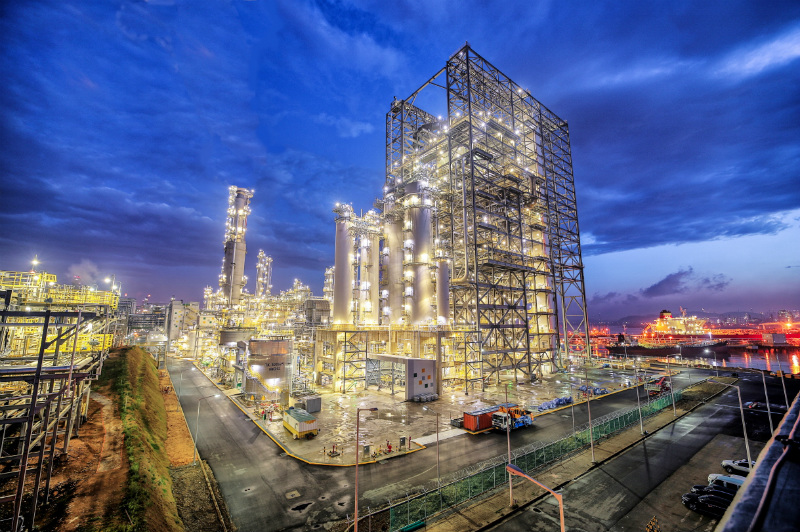
Residue Upgrading Complex
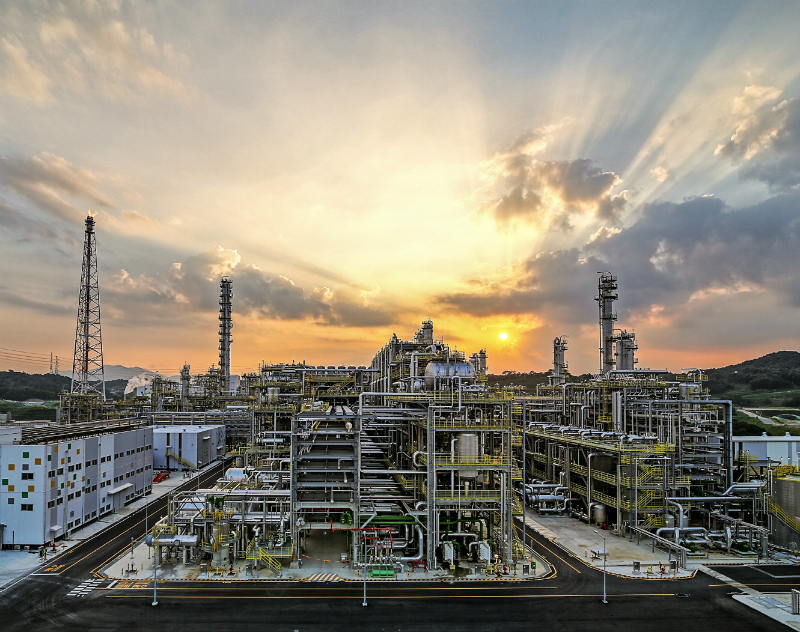
Olefin Downstream Complex
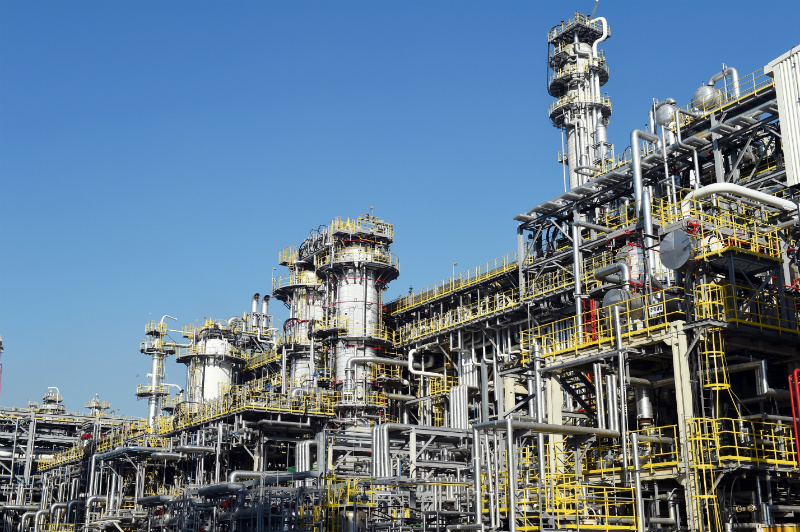
Residue Hydro-Desulfurization Unit
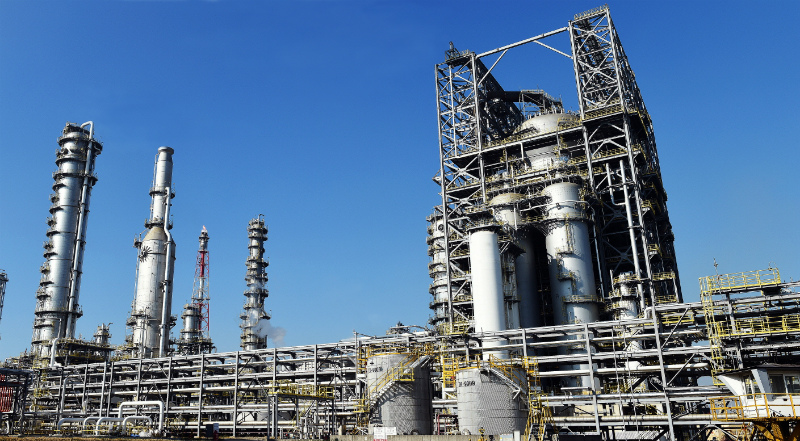
High Severity Fluid Catalytic Cracking Unit

